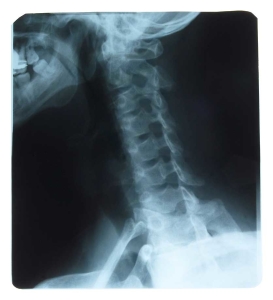 Sometimes, no matter how many times you use certain methods to treat chronic back pain, it just isn’t enough. It’s possible that the medications are losing their effectiveness as you build up resistance against them (depending on the type of pain relief medication). It’s also possible that the origin of the pain is recurring, but is impossible to treat permanently, like bone spurs for arthritis due to advancing age.
Sometimes, no matter how many times you use certain methods to treat chronic back pain, it just isn’t enough. It’s possible that the medications are losing their effectiveness as you build up resistance against them (depending on the type of pain relief medication). It’s also possible that the origin of the pain is recurring, but is impossible to treat permanently, like bone spurs for arthritis due to advancing age.
That does not mean, however, that a person has no more options.
Spinal Cord Stimulation (SCS)
Spinal cord stimulation is a medical procedure that uses electricity to treat chronic pain. In what can be described as science fiction made real, a small device that can generate electrical pulses will be implanted in the body, which can then send electrical pulses to the spinal cord. These pulses will then be able to interfere with the nerve impulses that deliver the feeling of pain.
How is spinal cord stimulation implanted?
The device is implanted using a local anesthetic and a sedative. At first, the supervising doctor will first use a trial simulator to see if the SCS solution will work with a particular person. Since the device is only going to be used for testing at this point, it is implanted percutaneously or using a needle through the skin. If the trial device works, then the doctor will have a more permanent device implanted.
Normally, the stimulator generator and battery will be implanted under the skin somewhere in your abdominal or buttock area. Very small, coated wires will then be run under the skin to where they will be inserted into the spinal canal. This arrangement is the usual case, as it has been proven very stable.
Once the procedure is complete, your doctor and you can then start determining the best pulse strength. You’ll then be taught how to activate the device. On average, you can use the device for about an hour or two, three to four times a day. You will have to keep the incision area for the implant clean for three to four days, while it heals.
How does spinal cord stimulation feel?
Instead of the pain that you feel when your back acts up, you will feel only a tingling sensation as the electrical current released by the device interferes with pain signals.
What are other conditions that it can be used for?
Aside from chronic back pain, it can also be used to ease the pain from a failed back surgery, and address any nerve-related pain such as CRPS and diabetic neuropathy.
Are there any risks to spinal cord stimulation?
As with any treatment, there are risks involved, such as scar tissue formation, malfunction and breakage of the equipment, infection, and spinal fluid leakage.
It is also possible that the pain will progress beyond the maximum pulse levels that the SCS device can generate. Not only that, it is also possible that the SCS device may become less effective over time.
Although older SCS devices were incompatible with MRI testing, newer devices are available which will allow you to have an MRI despite permanent implantation.

